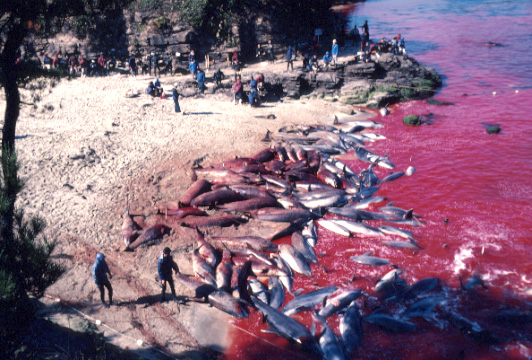
Movie Review: “The Cove” by Boulder’s Louie Psihoyos
The Cove by Louie Psihoyos of Boulder Colorado stands out as an exemplary personal journey tale in what is now a longstanding genre of independent filmmaking.
Ric OBarry was a trainer of dolphins, who brought us Flipper, the TV series of the 1960s. Two Flippers were required to play out the show, which also spawned a dolphin performance industry that still demands a huge number of the marine mammals. How many times have you seen images of dolphins swimming in tandem or jumping in formation to pull rings from the hands of a trainer? Its big business, big tourism around the world, and a travesty and tragedy.
Forcing dolphins to perform harmed the animals, OBarry found. He became an opponent of an industry (which had enriched him) that took thousands of dolphins from the wild, and turned them into dancing dogs. Nonetheless, the industry grew around him. It is huge today.

The Cove
Much of that growth happened in Japan, where dolphins were “harvested” as they migrated past the islands. The Cove follows that migration, in Taiji, Japan, and the annual dolphin hunt, with cameras developed for underwater shooting by GW Hannaway and Associates, also of Boulder. With OBarry and Psihoyos (a former National Geographic photographer), the team travels to Taiji, where dolphin supply capitalists do not welcome them. Nonetheless, they press on, not easy in a country where foreigners who overstep boundaries are despised. OBarry learned that while many dolphins were turned into circus performers, many others were simply slaughtered. They were there, fisherman reckoned – why not kill and sell them?

Dolphin hunting in "The Cove"
The dolphin traders whom they meet are about as reasonable as businessmen who make their living killing whales. So the team goes undercover, and we see the grim harvest. What begins as lyricism in elegant underwater photography turns into a gruesome slaughter. (Encounters with dolphin dealers on shore turn violent, also.) You wont look at a Sea World Circus the same way again, although one of the films lessons is that it will take more than this expose to shut down an industry that demands new product (more dolphins) every year. Japan alone has 50 dolphinariums. A dolphin who performs in one of them can cost $165,000. As Ross Perot said, do the math.
The Cove is an eloquent plea for the defense of a slaughtered species. Some 23,000 dolphins are killed around Japan every year. Much of that meat goes to schoolchildren, say the dolphin butchers, suggesting somehow that the kids might go hungry else. But theres a catch. The meat is filled with mercury, which is disproportionately harmful to children. Another sign of the growing poisoning of the oceans.
The Cove, with its rare images of the ocean and of a business that goes on largely undetected, is another project that advances the field of green cinema, which tells environmental truths that you might not get with such drama in newspapers or on TV. Psihoyos deserves praise for also keeping investigative journalism alive and, in this case, flipping. The more people who see it, the greater impact it will have.
